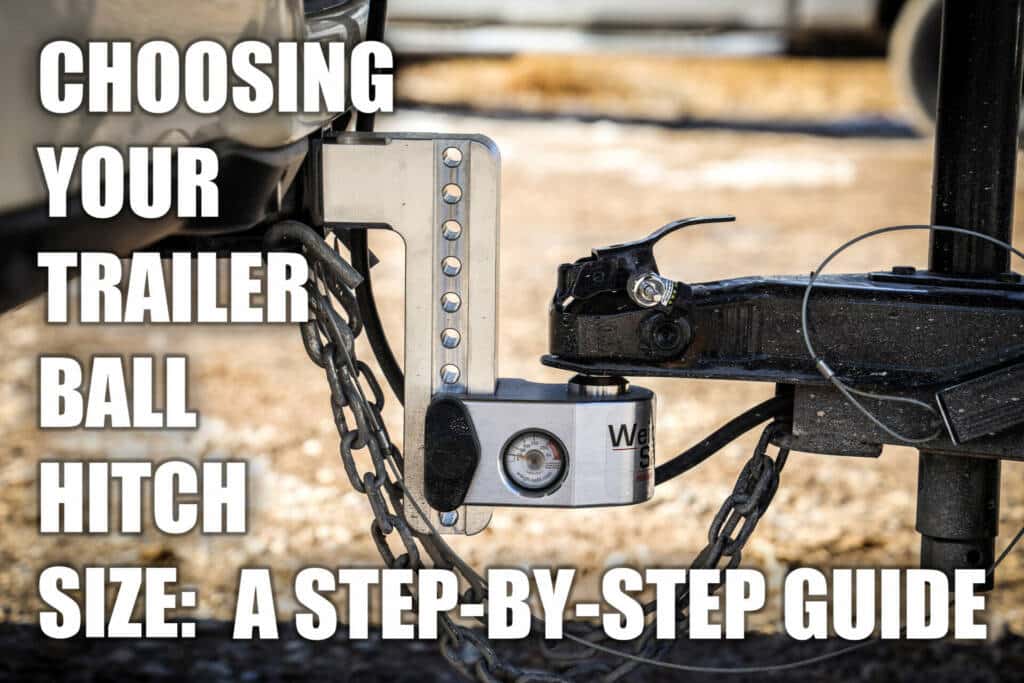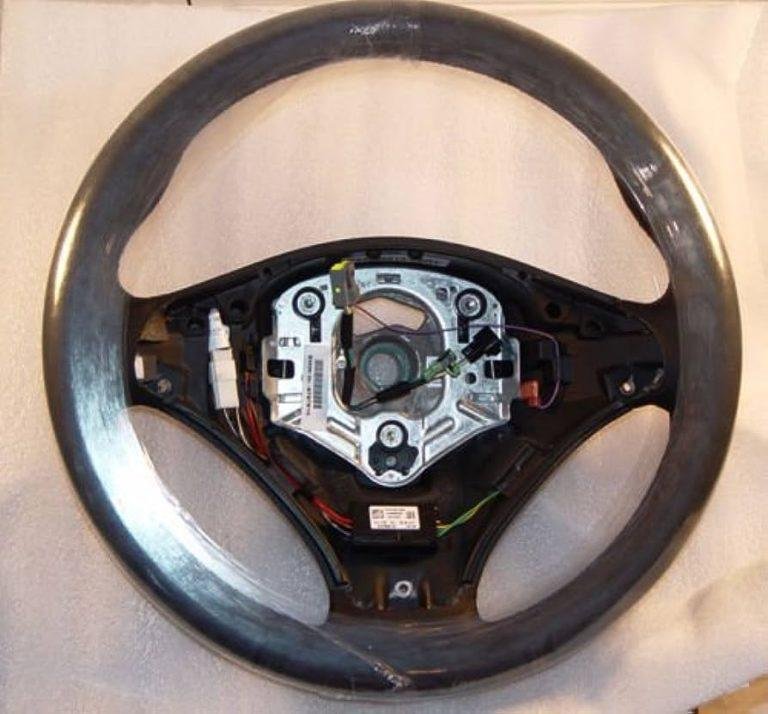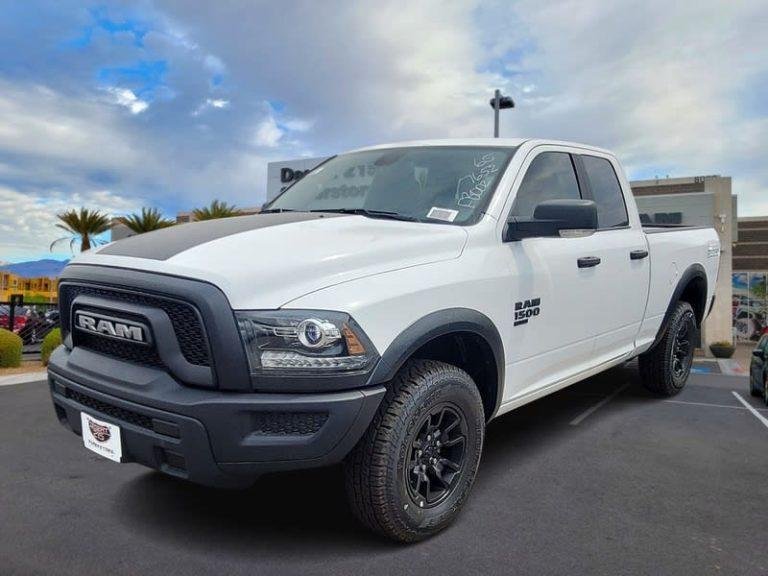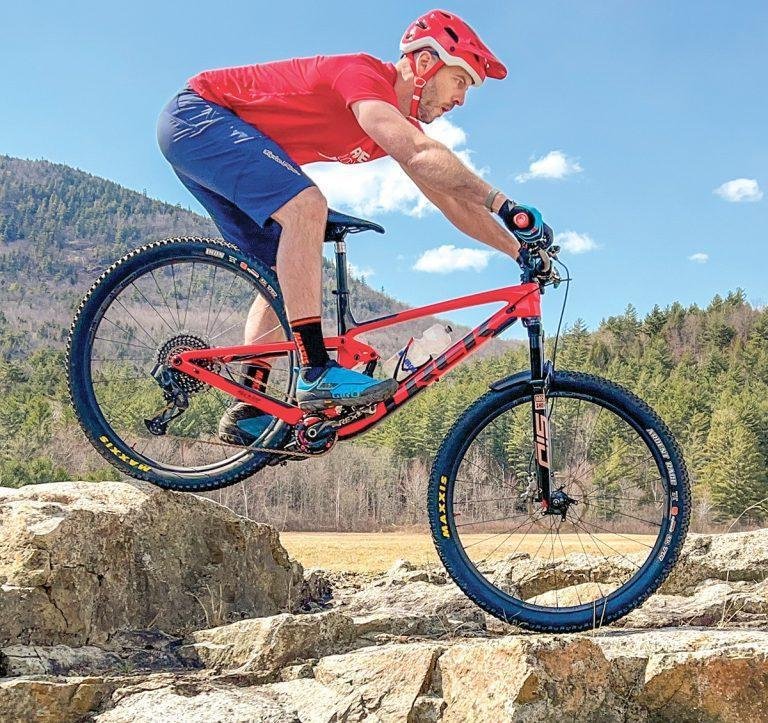To determine the size of tow bar you need, you must consider the weight of your vehicle and trailer. Matching the tow bar’s weight capacity to the combined weight of your vehicle and trailer is crucial.
This ensures safe and efficient towing without putting unnecessary strain on the tow bar or risking damage to your vehicle. By selecting a tow bar with a suitable weight capacity, you can enjoy worry-free towing adventures. So, take the time to assess the weight of your vehicle and trailer before choosing the appropriate size tow bar.

Credit: www.weigh-safe.com
Factors To Consider When Choosing A Tow Bar
When choosing a tow bar, it is important to consider the appropriate size to meet your towing needs. Matching the right size tow bar ensures safe and efficient towing for your vehicle.
Choosing the right tow bar is crucial for a smooth towing experience. With so many options available, it can be overwhelming to make the right choice. To ensure you find the perfect tow bar for your needs, there are a few factors you should consider.
In this section, we will explore three key factors when choosing a tow bar: weight capacity, vehicle compatibility, and mounting options.
Weight Capacity:
- Most importantly, consider the weight capacity of the tow bar. It should be able to handle the weight of the trailer or caravan you intend to tow. Remember to include the weight of any additional cargo you might carry in the trailer.
- It’s essential to check the manufacturer’s recommendations for weight capacity to ensure the tow bar can handle the load you plan to tow.
- Keep in mind that exceeding the weight capacity of the tow bar can lead to dangerous situations on the road, affecting not only your safety but also the safety of others.
Vehicle Compatibility:
- Before purchasing a tow bar, determine if it is compatible with your vehicle. Not all tow bars fit all vehicles, so check the compatibility list provided by the manufacturer.
- Consider factors such as the vehicle’s make, model, and year when selecting a tow bar. Different vehicle manufacturers may have specific requirements for tow bar fittings.
- It is essential to choose a tow bar that is specifically designed for your vehicle to ensure a secure and reliable towing experience.
Mounting Options:
- The mounting option of the tow bar is another critical factor to consider. There are three common types: Flange ball, swan neck, and detachable tow bars.
- The flange ball type is the most traditional and versatile option. It allows you to attach various tow bar accessories, such as cycle carriers or bumper protectors.
- Swan neck tow bars provide a sleeker appearance and are often preferred for aesthetic reasons. However, they may limit the use of accessories due to their integrated design.
- Detachable tow bars offer the flexibility of removing the tow ball when not in use, giving your vehicle a clean look. They are a great option if you want to maintain the original appearance of your vehicle.
Considering these factors when choosing a tow bar will ensure that you make an informed decision. Always prioritize safety and compatibility to have a safe and successful towing experience with your vehicle.
Determining The Weight Capacity
Determining the weight capacity of your tow bar is crucial when figuring out the right size you need. By carefully considering the weight of your vehicle or trailer, you can ensure a safe and effective towing experience.
Understanding Gross Trailer Weight (Gtw)
- Gross trailer weight (gtw) refers to the combined weight of the trailer and its cargo.
- This weight is an essential factor to consider when determining the appropriate size tow bar for your vehicle.
- To understand gtw, you need to know the weight of your trailer and the weight of the items you plan to haul.
Calculating Tongue Weight
- Tongue weight is the downward force exerted on the hitch ball by the trailer’s coupler.
- It is crucial to calculate tongue weight accurately to ensure safe towing.
- To determine tongue weight, you can use a specialized scale or follow these steps:
- Load the trailer with its typical cargo.
- Position the scale under the trailer’s hitch coupler.
- Measure the downward force applied to the scale.
Choosing A Tow Bar With Adequate Weight Capacity
- Once you know the gtw and tongue weight, it’s time to select a tow bar that can handle the load.
- Consider the following factors when choosing the appropriate weight capacity for your tow bar:
- Determine the maximum gtw of your trailer and ensure the tow bar can handle it.
- Choose a tow bar with a weight capacity slightly higher than your trailer’s gtw to provide a safety margin.
- Check the manufacturer’s guidelines or consult a professional to ensure compatibility between your vehicle and the tow bar.
- Remember that it is crucial to never exceed the weight capacity specified by the tow bar manufacturer.
By understanding the concepts of gross trailer weight and tongue weight, you can now select a tow bar that meets your towing needs. Always consider safety as the top priority and ensure that the tow bar’s weight capacity matches the requirements of your trailer.
Finding The Right Tow Bar For Your Vehicle
Choosing the right size tow bar for your vehicle is crucial for safe and efficient towing. With proper research and understanding of your vehicle’s towing capacity, you can find the perfect tow bar that meets your needs and ensures a smooth towing experience.
Choosing the correct tow bar for your vehicle is essential to ensure safe and secure towing. With various classifications and towing capacities, it’s important to understand which tow bar is suitable for your needs. Let’s take a closer look at the different classifications of tow bars and how to match them to your vehicle’s towing capacity.
Classifications Of Tow Bars:
- Class i:
- Designed for small cars and light-duty vehicles.
- Maximum towing capacity typically ranges from 2,000 to 3,500 pounds.
- Perfect for towing small trailers, bikes, or small watercraft.
- Class ii:
- Suitable for larger cars, suvs, and light trucks.
- Can tow loads up to 3,500 to 4,000 pounds.
- Ideal for towing mid-sized trailers, small boats, or pop-up campers.
- Class iii:
- Designed for larger suvs, trucks, and vans.
- Offers a towing capacity ranging from 5,000 to 6,000 pounds.
- Suitable for towing larger trailers, rvs, or small boats.
- Class iv:
- Recommended for heavy-duty trucks and suvs.
- Can tow loads up to 10,000 to 12,000 pounds.
- Ideal for towing large trailers, horse trailers, or heavier boats.
- Class v:
- Designed for commercial and heavy-duty applications.
- Offers a towing capacity exceeding 12,000 pounds.
- Suitable for towing large trailers, construction equipment, or commercial vehicles.
Matching tow bar class to your vehicle’s towing capacity:
To select the appropriate tow bar for your vehicle, you need to match its towing capacity with the tow bar class. Here’s how you can ensure the right match:
- Determine your vehicle’s towing capacity:
- Consult your vehicle’s owner’s manual or contact the manufacturer for accurate information.
- Consider factors such as engine power, suspension, and braking capabilities.
- Choose a tow bar class that aligns with your vehicle’s towing capacity:
- Class i bars for lighter loads up to 3,500 pounds.
- Class ii bars for mid-sized loads up to 4,000 pounds.
- Class iii bars for heavier loads up to 6,000 pounds.
- Class iv bars for even heavier loads up to 12,000 pounds.
- Class v bars for extremely heavy loads exceeding 12,000 pounds.
- Ensure compatibility:
- Confirm that the tow bar is compatible with your specific vehicle make and model.
- Consider any additional accessories or modifications needed for a proper fit.
Remember, it’s crucial to adhere to your vehicle’s towing capacity and select a tow bar that can handle the load you intend to tow. This will not only ensure your safety but also protect your vehicle from potential damage. Keep these guidelines in mind when determining the right tow bar for your vehicle, allowing you to tow with confidence and peace of mind.
Installing And Using A Tow Bar
Choosing the right size tow bar for your vehicle is essential when installing and using a tow bar. Proper research and understanding your vehicle’s towing capacity will help you make the right decision for a safe and efficient towing experience.
Mounting the tow bar:
- The first step in installing a tow bar is mounting it to your vehicle securely. There are two main types of mounting options: Fixed mounting and receiver mounting, each with their own advantages and considerations.
Fixed mounting:
- Fixed mounting involves permanently attaching the tow bar to the front of your vehicle. Here’s what you need to know:
- This type of mounting provides a more stable and rigid connection.
- It typically requires drilling into your vehicle’s frame or bumper for installation.
- Professional installation is recommended for optimal safety and performance.
Receiver mounting:
- Receiver mounting involves using a hitch receiver attached to your vehicle. Here’s what you need to know:
- This type of mounting offers more flexibility, as you can easily remove the tow bar when not in use.
- It requires a hitch receiver to be installed on your vehicle, which can vary depending on the vehicle’s make and model.
- Ensure the hitch receiver is rated for the weight of your tow bar and the load you intend to tow.
Connecting the tow bar:
- Once the tow bar is mounted to your vehicle, you need to properly connect it to the vehicle being towed. Here’s what you need to do:
- Ensure the tow bar is level and aligned with the vehicle being towed.
- Use safety chains or cables to provide an additional layer of security.
- Double-check that all connections are tightened and secure before towing.
Safety considerations:
- When using a tow bar, it’s important to prioritize safety. Here are some key considerations:
- Follow the manufacturer’s instructions for your specific tow bar model.
- Ensure the tow bar and connections are regularly inspected for any signs of wear or damage.
- Familiarize yourself with the towing capacity and weight limitations of your vehicle and tow bar.
- Always obey traffic laws and drive cautiously when towing.
Properly securing the tow bar:
- To prevent any mishaps while towing, it’s crucial to properly secure the tow bar. Follow these guidelines:
- Make sure the tow bar is securely fastened to both vehicles.
- Use safety cables or chains as an extra precaution to keep the vehicles connected in case of an unexpected detachment.
- Regularly check the connections during the trip to ensure everything remains secure.
Adequate lighting and signaling:
- When towing, it’s essential to have proper lighting and signaling in place. Here’s what you need to know:
- Install working taillights, brake lights, and turn signals on the towed vehicle.
- Use a wiring harness or a separate lighting system to connect the lights of the towed vehicle to the towing vehicle.
- Regularly test the lights to ensure they are functioning correctly.
Towing tips and best practices:
- Finally, here are some general tips and best practices to keep in mind while using a tow bar:
- Practice towing in a safe and empty parking lot before hitting the road.
- Be aware of the additional length and weight added by the towed vehicle, and adjust your driving accordingly.
- Maintain a greater following distance and allow for extra braking distance.
- Avoid sudden maneuvers and drive at a moderate speed to ensure stability.
Remember, proper installation, maintenance, and adherence to safety guidelines are essential when using a tow bar. Use this information as a guide to make the most out of your tow bar experience. Stay safe on the road!
Maintaining And Caring For Your Tow Bar
For effective maintenance and care of your tow bar, it’s crucial to determine the correct size you need. This ensures proper towing capacity and safe transportation of vehicles or trailers.
Regular Inspection And Maintenance
- Inspect the tow bar before each towing session to ensure its integrity and functionality.
- Check for any signs of damage, such as cracks, bends, or rust, which could compromise the tow bar’s strength.
- Ensure that all bolts, nuts, and pins are securely fastened and in good condition.
- Verify that the tow bar’s safety chains are intact and in proper working order.
- Lubricate any moving parts, such as the hitch and pivot points, to ensure smooth operation.
- Test the tow bar’s ability to latch and unlatch correctly.
Cleaning And Lubrication
- Regularly clean the tow bar to remove dirt, debris, and road grime that may accumulate during towing.
- Use a mild detergent and warm water to clean the tow bar, avoiding abrasive cleaners that could damage the surface.
- Thoroughly rinse the tow bar with clean water and dry it completely before storage.
- Apply a high-quality lubricant to the moving parts of the tow bar to prevent corrosion and ensure smooth operation.
- Pay extra attention to the hitch and pivot points, as they are prone to wear and require adequate lubrication.
- Avoid using excessive amounts of lubricant, as this may attract more dirt and debris.
Storage And Protection Tips
- When not in use, store the tow bar in a clean and dry location to prevent rust and damage.
- Consider using a protective cover to shield the tow bar from the elements and prolong its lifespan.
- Keep the tow bar away from extreme temperatures, as extreme heat or cold can affect its performance.
- If possible, store the tow bar in a vertical position to minimize the risk of bending or warping.
- Regularly inspect the stored tow bar for any signs of damage or deterioration.
- When transporting the tow bar, make sure it is securely fastened to prevent movement and potential damage.
Remember, proper maintenance and care of your tow bar will not only extend its lifespan but also ensure safe and hassle-free towing experiences. By following these simple steps, you can enjoy the convenience and reliability of your tow bar for years to come.
Frequently Asked Questions On What Size Tow Bar Do I Need?
How Do I Choose A Tow Bar?
To choose a tow bar: 1. Consider your towing needs: determine the weight and size of the vehicles or trailers you plan to tow. 2. Check your vehicle’s towing capacity: review your vehicle’s user manual or consult with the manufacturer to ensure the tow bar is compatible with the maximum weight your vehicle can tow.
3. Select the appropriate tow bar type: there are various types such as flange, swan neck, and detachable tow bars. Choose one that suits your vehicle and towing preferences. 4. Look for safety features: ensure the tow bar has safety features like integrated locks or indicators to signal the secure attachment of the towed vehicle.
Remember, choosing the right tow bar is essential for safe and efficient towing. Assess your needs, vehicle capacity, bar type, and safety features to make an informed decision.
What Is The Size Of A Standard Tow Bar?
The size of a standard tow bar depends on the vehicle and the towing capacity required. It typically measures around 50mm in width and 50mm in height, with a length of 1,200mm to 1,500mm. However, it’s important to note that tow bar sizes can vary, and it’s always recommended to refer to the vehicle manufacturer’s specifications.
Installing a tow bar that is correctly fitted and compatible with your vehicle is crucial to ensure safe towing.
What Size Tow Hitch Do I Need?
To determine the size of the tow hitch you need, you should first know your vehicle’s tow rating. This information can usually be found in your owner’s manual or by contacting the manufacturer. Once you have this rating, you can match it with the appropriate tow hitch class.
Generally, smaller vehicles require a class i or class ii hitch, while larger vehicles may need a class iii or higher. Each class corresponds to a specific weight capacity, so it’s important to choose a hitch that can handle the weight of your trailer or equipment.
Remember to consider any additional equipment, such as bike racks or cargo carriers, when selecting your tow hitch. Always consult the manufacturer’s guidelines for the most accurate information.
How Much Weight Can A 2 Inch Ball Pull?
A 2 inch ball can typically pull a weight of up to 3,500 pounds.
Conclusion
After considering all the factors mentioned in this blog post, it’s clear that choosing the right size tow bar is crucial for a safe and efficient towing experience. By understanding the weight ratings and attachment systems, you can determine the appropriate tow bar size for your specific vehicle and towing needs.
Remember to consult your vehicle’s owner manual and seek professional advice if you’re unsure. Taking the time to research and select the correct tow bar size will not only prevent potential accidents or damage but also ensure a smoother and hassle-free towing journey.
Whether you’re towing a trailer, rv, or other heavy loads, investing in the right tow bar size is a decision that should not be overlooked. So, make sure to choose wisely and enjoy a safe towing experience!




